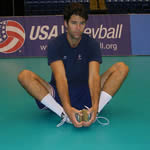
As the Head Athletic Trainer for the Men's Olympic Volleyball Team it's my job to make certain that the athletes remain healthy and limber for competition. Tight muscles can lead to poor performance and injury and increasing flexibility can help to improve these conditions.
Stretching comes in many forms but for now we're just going to talk about static stretching. While static stretching is effective for increasing the elasticity of muscles that are tight, they should be performed after a good warm up for maximum benefit.
I encourage two bouts of static stretching during a training session:
The first bout should be no more than five minutes long and take place after a dynamic warm up such as jogging, side shuffling, skipping, backwards running, plyometrics, agility drills, ladder drills, etc. This stretch should focus on your problematic areas as opposed to a full drawn out stretch on every possible muscle group.
However, if you feel better with a long, complete stretch prior to activity, then stick with it.
The second bout of stretching should occur immediately following your volleyball activity. The Men's Olympic Volleyball Team takes about 10 minutes to stretch all pertinent muscles groups including hip flexors, hamstrings, claves, glutes, quads, adductors/groin, abdomen, low back and shoulders with extra focus on individual problematic areas after each practice and every game.
The following list outlines how to properly stretch the 10 major muscle groups needed for volleyball:
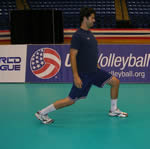
In volleyball, you're often in a defensive position—bent over at the hips with your butt stuck out—leaving you susceptible to developing short, inflexible hip flexors. Tight hips flexors can restrict your range of motion limiting the ground you cover on the court and can eventually lead to low back pain.
Stretch: Lunge forward with your left leg and feel a stretch in the front part of your right hip. Then reach your right arm straight up in the air to isolate a different area. Be sure to switch legs and stretch both sides.
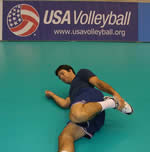
The most common overuse injury reported in volleyball athletes is patellar tendinitis or "jumper's knee." Jumping from a crouched position to block or spike a ball causes your quadriceps to contract and puts stress on your knees.
Stretch: Lie on your side and pull your heel towards your glutes. You can also pull your hip back into extension in this position to incorporate the hip flexors.
Another way to stretch your quads is to lie on your stomach and pull your heel to your glutes.
Although effective, I don't recommend the "hurdler position" (knee crossed behind the body instead of in front) due to the increased stress placed on the knee.
These muscles work in conjunction with your quads and aid in stabilization power production. Although they are usually overlooked in strength training, the hamstrings play a vital role in jumping, landing, and lateral movements.
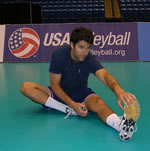
Stretch: In the standing position, step forward with your left leg, keeping your knee straight (bend your right knee slightly) and move your chest closer to your thigh. Pull your toes upward and feel an isolated stretch behind the knee.
To further stretch the high hamstring area, bend your left knee and move your chest even closer to the thigh.
The modified "hurdler" stretch also works well. Keep your back straight and toes up to emphasis behind the knee.
Overuse of the calf muscles when jumping to block or spike can cause tightness in the calves which can lead to foot pain such as plantar facilities and Achilles tendonitis.
Stretch: There are a few different ways to stretch your calves, choose whichever one works best for you.
These muscles can easily get tight due to the large amount of side to side movement and constantly being in a squat position during volleyball.
Stretch: In the seated position, bend your right knee and cross it over your left. Then pull your right leg to your chest. You can also bend your left leg and cross your right leg over your left leg.
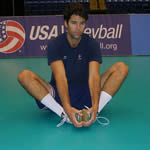
The adductors help pull the legs together when they contract, and also help to stabilize the hip joint, but can easily be injured if the muscles aren't warmed-up and flexible.
Stretch: You can stretch the adductors by doing any one of the following.
The muscles of the abdominal region make up a large part of the core stability muscles that work constantly to stabilize the body and especially while performing and landing jumps. Keeping the core pliable and strong helps to control movements.
Stretch: The lunge and reach position used to stretch the hip flexors will stretch the abdomen but lying on your stomach, pressing your hips into the floor, and arching backward is another option.
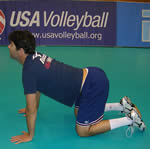
The incidence of back injuries among volleyball players is frequent, particularly among elite-level athletes. Volleyball players have an increased risk of back injuries because of the repetitive and excessive loading of the spine. Maintaining flexibility and strength is the key to withstanding the demands of the sport and preserving a healthy back.
Stretch: It is best to perform each of these stretches to ensure maximum flexibility throughout your workout.
The repetitive overhead movement of your arms can stress your rotator cuff muscles and tendons, causing overuse injuries that are common in volleyball. A tight posterior capsule and rotator cuff can lead to many different shoulder injuries including and rotator cuff tendonitis, Glenoid labrum tears, and rotator cuff strains.
The "sleeper stretch" is extremely important for volleyball players.
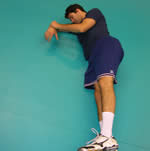
Stretch: Lie on your left side and extend your left arm out in front of you. Then bend your left arm so your fingertips are pointing towards the ceiling. With your right arm push your left arm down keeping your palm towards the floor and your left arm in a 90-degree angle until you feel a gentle stretch. Repeat on both sides.
You can also extend your arm underneath your body to feel stretching in the back of the shoulder, or stand and use the net or the standard as a post.
Tight chest muscles can also lead to a variety of shoulder injuries.
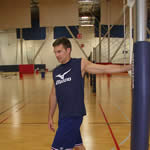
Stretch: While lying on your stomach, extend your left arm out to the side and rotate your upper body to the right. You should feel the stretch in the front of your left shoulder.
This stretch can also be performed while standing. Place your left forearm against the net or standard as a post and turn your body away. Use both straight and bent elbow positions.
Remember, always be sure not to perform any stretches that cause pain. Obviously if you are not already flexible, aggressive stretching can be uncomfortable in the muscles you are isolating – that desirable "hurt so good" type of pain. However, you should not have any other type of pain associated with stretching.
You make time for working out, so remember to make time for stretching as it can prevent injuries and enhance your performance!
Float tubing the High Country.
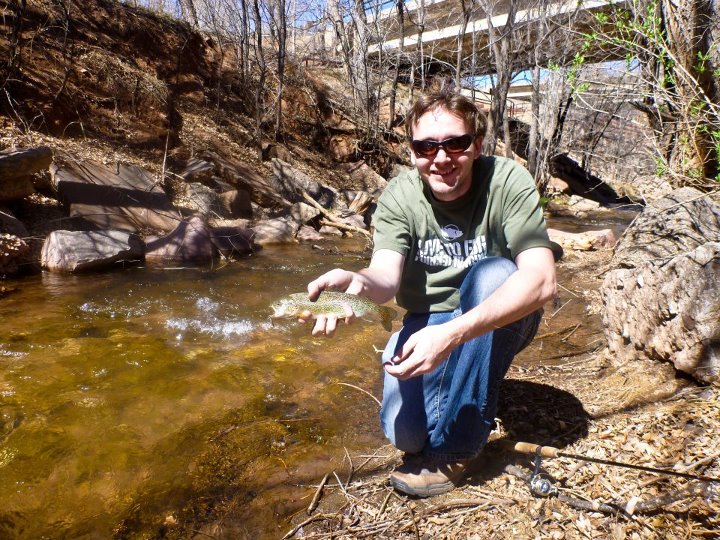
Christian Laettner Basketball Academy
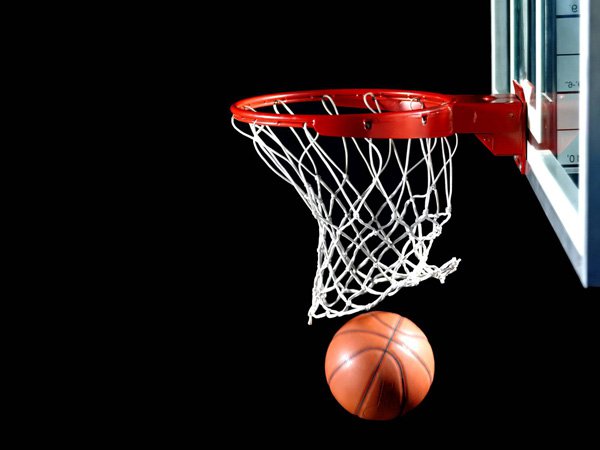
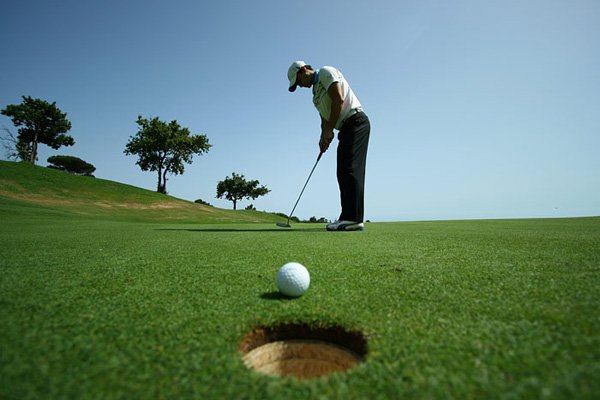
Copyright © www.mycheapnfljerseys.com Outdoor sports All Rights Reserved